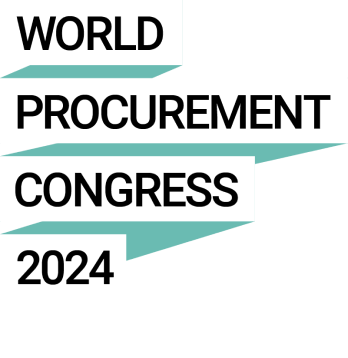Challenge
Automation promises to hugely streamline the job of procurement, eliminating tedious administrative work and ultimately allowing the function to move faster and focus on more strategic priorities. That was the aim of the Pan American Health Organization (PAHO), a specialised international health agency for the Americas, when it turned to robotic process automation (RPA) as it faced up to the unprecedented challenge of helping countries throughout the Americas in their response to the Covid-19 pandemic. As a major organisation supporting countries in Latin America & The Caribbean with accessing critical health supplies and delivering vaccines, PAHO recognised that it needed to significantly speed up its processes in order to meet surging levels of demand. Prior to the pandemic, PAHO’s communication with suppliers and ministries of health, of their Member Countries, receiving its shipping supplies, was mostly done by email, which meant it typically took up to four days to share critical information and shipping documents, delaying the shipment of critical supplies. After the outbreak, demand for supplies soared, requiring US$1.63 billion in health supplies to be procured, an increase of more than 41% over 2020. This rapid growth in purchase order volumes required a fast tracked modernisation project, as the procurement team sought to deliver a significant reduction in repetitive and routine tasks to ensure critical materials, including vaccines and pharmaceuticals could be delivered quickly. By implementing RPA, the team was able to eliminate this inefficiency and respond rapidly to the crisis.
What is the Pan American Health Organization?
Pan American Health Organization (PAHO) is an international public health agency, serving as the Regional Office for the Americas of the World Health Organization (WHO – and agency of the United Nations) and as the leading health organization of the Inter-American System. PAHO has scientific and technical expertise in public health and procurement, and works with its 35 member states to deal with priority regional and national health issues. The PAHO Team interacts with Ministries of Health (MOHs) from over 42 countries and territories in the Americas.
Approach
Summarising PAHO’s approach
PAHO’s Procurement team, working alongside the organisation’s Information Technology team, led the design and implementation of RPA, using the UIPath platform. A number of staff were selected to receive training in UIPath to support the design of the software bots. This ultimately led to the creation of two bots:
- Mia: A bot that creates draft purchase orders
- Max: A bot with optical character recognition (OCR) capabilities that creates the Advanced Shipment Notifications, which provide national authorities with information about the details of their shipments and when they are expected to arrive.
Creating and deploying these bots took place over several stages:
- Information gathering
- Process mapping
- Creating the bots
- Applying Optical Character Recognition
- Establishing a cloud repository
What is robotic process automation?
Robotic process automation (RPA) is the “application of technology which allows employees in a company to configure computer software, or a robot, to capture and interpret existing applications for processing a transaction, manipulating data, triggering responses and communicating with other digital systems”, according to the Institute for Robotic Process Automation and Artificial Intelligence (IRPAAI). RPA tools usually copy the employee path through mapped applications and data repositories. These tools are triggered – either by a user or automatically – when certain criteria are met. Although businesses apply RPA to a range of processes, the technology is typically used to complete data-intensive tasks that are repetitive, voluminous and involve multiple interfaces. These include populating data fields, creating files and validating information. RPA helps to both simplify and speed up time-intensive procurement activities.
Information gathering
During the spring and summer of 2020, the procurement team worked to get insights on RPA from early adopter organisations including the World Bank, which shared examples of the sorts of processes that are suitable for automation. In addition, a number of staff members attended webinars where other organisations outlined their approaches to RPA. These sessions helped inform what RPA was and how it could be applied. In August 2020, PAHO began discussions with technologically-focused organizations within the United Nations, such as the United Nations International Computing Centre (UNICC) to get advisory support for the implementation. UNICC supported in putting together a viable implementation roadmap, ensuring the correct architecture was in place and programming the bots, and also continues to run the bots from a technical perspective.
Process mapping
Not all processes are suitable for RPA, as robots lack the human ability to judge situations with nuance and think creatively in response to problems, so determining which processes would be most beneficial to focus on was key to making the project a success. To achieve this, the team analysed existing processes using three characteristics – the degree to which they were:
- Repetitive
- Routine
- Rules-based
This led to 16 processes being assessed as candidates to be automated with RPA of which two, the creation of purchase orders and the creation of Advanced Shipment Notices, were prioritised due to their critical importance in procuring vaccines and pharmaceuticals.
Creating the bots
Having settled on purchase orders and advanced shipping notices as their two areas of focus, PAHO worked with UNICC to develop the two bots.
Mia
Mia downloads purchase data from a spreadsheet report and uses this to fill in specific details in the ERP software Workday to create purchase orders. It is also capable of detecting whether information is in Spanish and translating it into English. The bot is able to produce a typical purchase order within three minutes, compared to the typical human which would take around 20 minutes, speeding up the process of purchasing critical supplies.
Max
Max uses OCR to extract data from shipping documents and then processes this to create advanced shipping notifications. At first, Max’s output had to be verified by a human team member to ensure it had been processed correctly, but with each ASN produced, the bot learned how to do its task better and eventually was able to begin working autonomously. The documents notify national authorities with the information related to tracking numbers, carriers, flight numbers, gross weight, number of pieces, batch numbers, and expiration dates. The availability of batch numbers and expiration dates is also hugely valuable to the quality assurance team at PAHO to follow up on all shipments of vaccines and pharmaceuticals.
Applying optical character recognition (OCR)
The use of OCR was essential to automating the processing of shipping documents by Max, as it converts typed, handwritten or printed text into machine-encoded text – allowing the bot use this information in its processes without staff having to input it manually. In some cases documents were being provided which had been scanned but were illegible, creased, backwards or did not include the required information. Consequently, the team had to train suppliers in providing documents in the correct format, to ensure they were readable. PAHO began by organising one-to-one sessions with strategic vendors, and then used the learnings from those sessions to organise refresher training available to anyone who transacted with them.
Establishing a cloud repository and dashboard
In order to collect and provide timely information from suppliers and national authorities, PAHO established a SharePoint repository, The PAHO’s Supplier Collaboration Portal. Feedback from strategic suppliers and national authorities was used to shape what the repository contained, and how it was structured. Max is used to ensure all information is kept up-to-date. 197 suppliers and 380 national authorities can access all relevant shipping information through this platform. This portal then set the basis for a dashboard, built using Power BI. The dashboard is available to the public, and allows individuals to track vaccine deliveries in the Americas. Users are able to filter by the country which purchased each delivery, as well as the status of those deliveries. The dashboard also displays arrival dates and times, the quantity of doses and where the vaccines were delivered. These dashboards were an effective tool in demonstrating the work carried out by PAHO and received significant media attention. The page where the dashboard is hosted is also used to house press releases on deliveries, helping to further illustrate its impact.
Outcome
Results
Mia and Max went live In March 2021, as procurement became the first function in PAHO to establish RPA capabilities. With the implementation of RPA, between March 2021 and May 2022, the procurement team saved 1,660 hours committed to repetitive and non-value-added activities. Max processed 22,861 shipping documents. With the time saved from the software bots, procurement has been able to focus on fewer administrative activities, allowing the team to negotiate more optimal prices, engage in greater analysis and focus on partnering with internal stakeholders and suppliers.
Next steps
The procurement team are working with their IT partners to draft a governance policy, which will set out more formal practices on using and maintaining software bots. By getting such a policy in place, the team hope to extend their RPA capabilities across other processes which had been identified as candidates. Work is also being undertaken to improve the database Max relies on. This is part of a wider principle of continuous improvement for the project and involves continual communication and input from Ministry of Health officials and vendor partners.
Advice for others
PAHO learned that careful process selection was key to prioritising which workflows needed to be mapped and standardised. Another major finding from the team was the need for strong management support. The project succeeded in part due to the backing of the Director of Procurement and the team’s enthusiasm and engagement. Strong management backing helped drive a change of mindset within PAHO. A lot of individuals had fears for the impact of RPA on their roles, but with the support of leadership, the team were able to highlight how process automation would help staff elevate their roles and be more strategic. This change in mindset is important because the project relied on empowered staff, who despite not being in the IT department would be keen on learning a new technology and recognising how it could be applied to their fields. The project team had great success in being able to illustrate to those in charge of processes how RPA could benefit them, and those relationships proved highly important in the success of the initiative.
Image: Mark Van Scyoc / Shutterstock.com


















